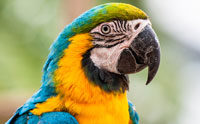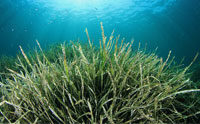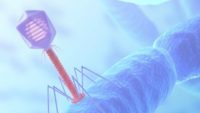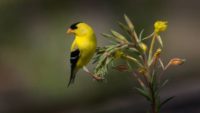The amazing ability of birds to achieve ape-level cognitive traits—and in some cases exceed them like when they emulate human speech—has long confounded the evolutionary paradigm that claims humans evolved from apes. Now the bird intelligence evolutionary quandary has worsened as described in a new research report that shows bird brains contain over twice as many neurons per unit area as ape brains. More… …read more Read more here: icr.org
By Dr. Joe Francis Rusty old iron is toxic to our bodies. Yet God designed all living things to depend on a steady supply of iron to continue living. …read more Read more here: AIG Daily
After investing so much time and effort to understand how all parts of the human body interact, scientists keep turning up new and unforeseen connections—often when they ask the right questions. New and strange developments inspired a team to ask wacky questions about a unique white blood cell called Ly6Chi. And they found some profound answers. More… …read more Read more here: icr.org
The concept that horizontal gene transfer explains shared genes among unrelated taxon is being challenged by a solar-powered sea creature. …read more Read more here: creation.com
Australia’s Tasmanian ‘tiger’ is a puzzle for evolutionists so they usually classify it as a separate biological family. …read more Read more here: creation.com
By Heather Brinson Bruce How’d you like to think with your arms? Ask the smartest invertebrate on the planet! …read more Read more here: AIG Daily
As genetic research moves forward, the similarity between humans and chimpanzees becomes more and more distant—well beyond the bounds of evolutionary probability. But the secular world appears determined to show how chimps can behave similar to humans to bolster the failing evolutionary story. The most recent media buzz centers on several articles in which chimps are shown grieving over their dearly departed comrades. More… …read more Read more here: icr.org
Biologists recently sequenced the seagrass genome. They claim, “Uniquely, Z. marina has re-evolved new combinations of structural traits related to the cell wall.” Re-evolved? There is no scientific reason—no empirical evidence—to say the structural traits somehow “re-evolved.” How can these scientists make such a statement? More… …read more Read more here: icr.org
By Dr. Elizabeth Mitchell Named Monocercomonoides, this eukaryotic microorganism doesn’t have the slightest trace of mitochondria. How does it survive? …read more Read more here: AIG Daily
By Dr. David Menton The retinas of your eyes are made of living cells, which must be nourished by blood vessels. But with all this blood covering your eyes, how can you see? …read more Read more here: AIG Daily
By Dr. Elizabeth Mitchell The giraffe’s genome explains its long neck but does not support an evolutionary tall tale. …read more Read more here: AIG Daily
An influential scientific discovery that was once celebrated as compelling evidence for evolution may require reinterpretation, according to a growing number of scientists and researchers. In 2008, biologist Richard Lenski of Michigan State University jubilantly announced that he had witnessed a “major evolutionary innovation.” Lenski, as part of his Long-Term Experimental Evolution (LTEE) project, had been carefully observing the bacteria Escherichia coli (E. coli) reproduce in a lab. Finally, after 20 years and 31,000 E. coli generations, Lenski noticed that one of the bacteria populations had seemingly mutated and acquired the ability to process the chemical citrate when oxygen was [More]
By Donna O’Daniel When we think of birds, we think of flight. But it appears the Creator had other plans, too. …read more Read more here: AIG Daily
An aquatic ‘impressionist’ is not all that it seems to be. …read more Read more here: creation.com
Evolutionary teachings hold that all mankind arose from a population of ape-like ancestors. But Genesis, the rest of the Bible, and Jesus teach that mankind arose from Noah’s three sons and their wives. A new analysis of human mitochondrial DNA exposes two new evidences that validate the biblical beginnings of mankind. More… …read more Read more here: icr.org
By Dr. Elizabeth Mitchell Does the discovery that sleeping dragons as well as mammals and birds experience REM sleep support the evolutionary story of their common ancestry with humans? …read more Read more here: AIG Daily
By Ken Ham Scientists have traditionally divided North American mammoths into several “species” based on physical differences and differing environments. But new research suggests that all of these species of mammoths could successfully interbreed with one another. One of the scientists involved in this study commented, Species boundaries can be very blurry. We might find differences in features of the teeth or skeleton that closely correspond to what we think are real species boundaries. But other features may not correspond to those boundaries, suggesting that what we formerly regarded as separate species are in fact not at all. . . [More]
By Dr. Nathaniel T. Jeanson The more we learn about the origin of species, the more we know about Noah’s Ark. The Flood reverberates to the present day in the form of genetics. …read more Read more here: AIG Daily
Simply touching a baby deer could end its life. …read more Read more here: creation.com
By Ken Ham Pregnant mothers often choose to take a chorionic villus sampling (CVS) test when they are 11 to 14 weeks pregnant. This test analyzes placental cells for genetic abnormalities to predict genetic disorders, such as Down syndrome. Well, research on mouse embryos suggests that even when normal cells and abnormal cells are mixed half and half in the placenta, the baby can still be born perfectly healthy. This happens because the abnormal cells are killed via programmed cell death, and healthy cells replace them. Although the baby mouse itself has replaced the abnormal cells, the placenta still retains [More]
By Dr. Andrew Fabich The list of beneficial functions for Endogenous Retroviruses continues to grow. ERVs also promote healthy immune responses—another creationist confirmation. …read more Read more here: AIG Daily
By Dr. David W. Boyd, Jr. A scientist with a biblical worldview has to account for the different species of birds found today in each created bird kind from the Flood to the present. …read more Read more here: AIG Daily
By Ken Ham A fire was deliberately started in a nature preserve in Australia to help fire-dependent vegetation grow. Instead of fleeing the fire, as most animals would do, the echidnas stuck around, and nearly all of them survived. Researchers believe it’s likely that they curled up in thick trees or logs and entered a state known as torpor. This allows them to become “inert and chilly,” thus heavily reducing their energy needs and helping them to survive with limited resources. Interestingly, some creation researchers think that perhaps some animals on the Ark entered a torpid state during …read more [More]
Humans alone cry tears which are vital to our emotional health. …read more Read more here: creation.com
By Ken Ham That was a bit tongue-in-cheek, but a recent photo gallery titled “8 Animals That Are Evolving Quickly” made me shake my head. Their explanation for quick evolution? “Rapid adaptability.” Now those who understand the principles of biology, regularly read my blog and AiG articles, or who have visited the Creation Museum should immediately note that “rapid adaptability” is not evolution. In fact, it’s really the opposite of a molecules-to-man type of supposed process. The first caption reads, “Whether it’s climate change or other environmental conditions, animals are constantly evolving to better survive. Most people think of animal [More]
Scientists recently discovered another bizarre fish. This one has a pelvic girdle. Is it the missing link evolutionists have been searching for? More… …read more Read more here: icr.org
By Ken Ham According to a recent study by Montana State University paleontologists, certain sauropods may have had ligaments in their long necks that allowed them to graze more efficiently. These sauropods “had split spines that may have supported two elastic ligaments. When the dinosaurs extended their necks to feed on the left side, the ligament on the right side was stretched, storing energy. As the neck swung back to the right, that energy was released. The same recoil action happened when the sauropods swung their necks to the right.” This sweeping motion allowed them to graze on plants at [More]



















![Let the Healing Begin [Live] Let the Healing Begin [Live]](http://img.youtube.com/vi/5X8vok_mD9M/0.jpg)






















